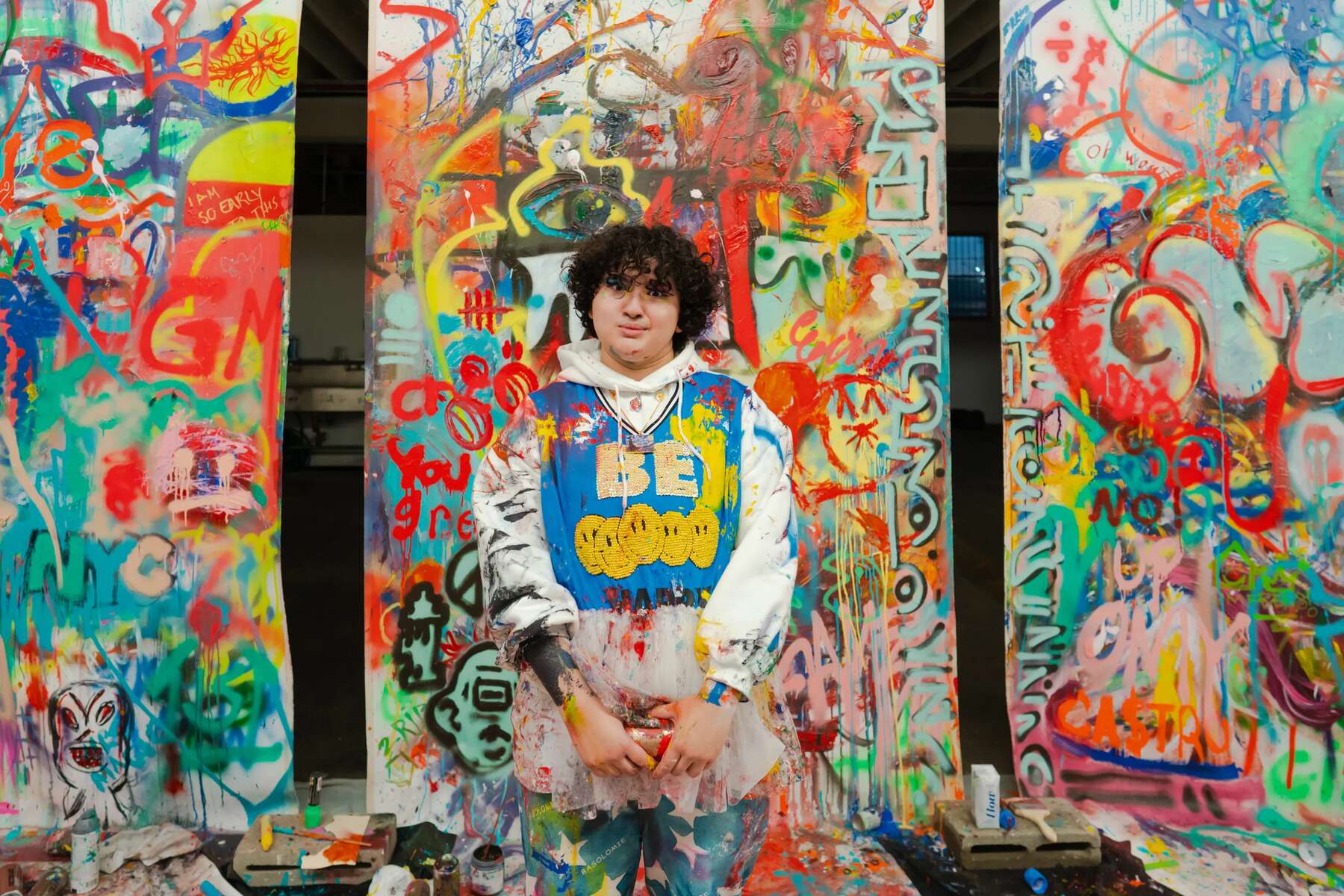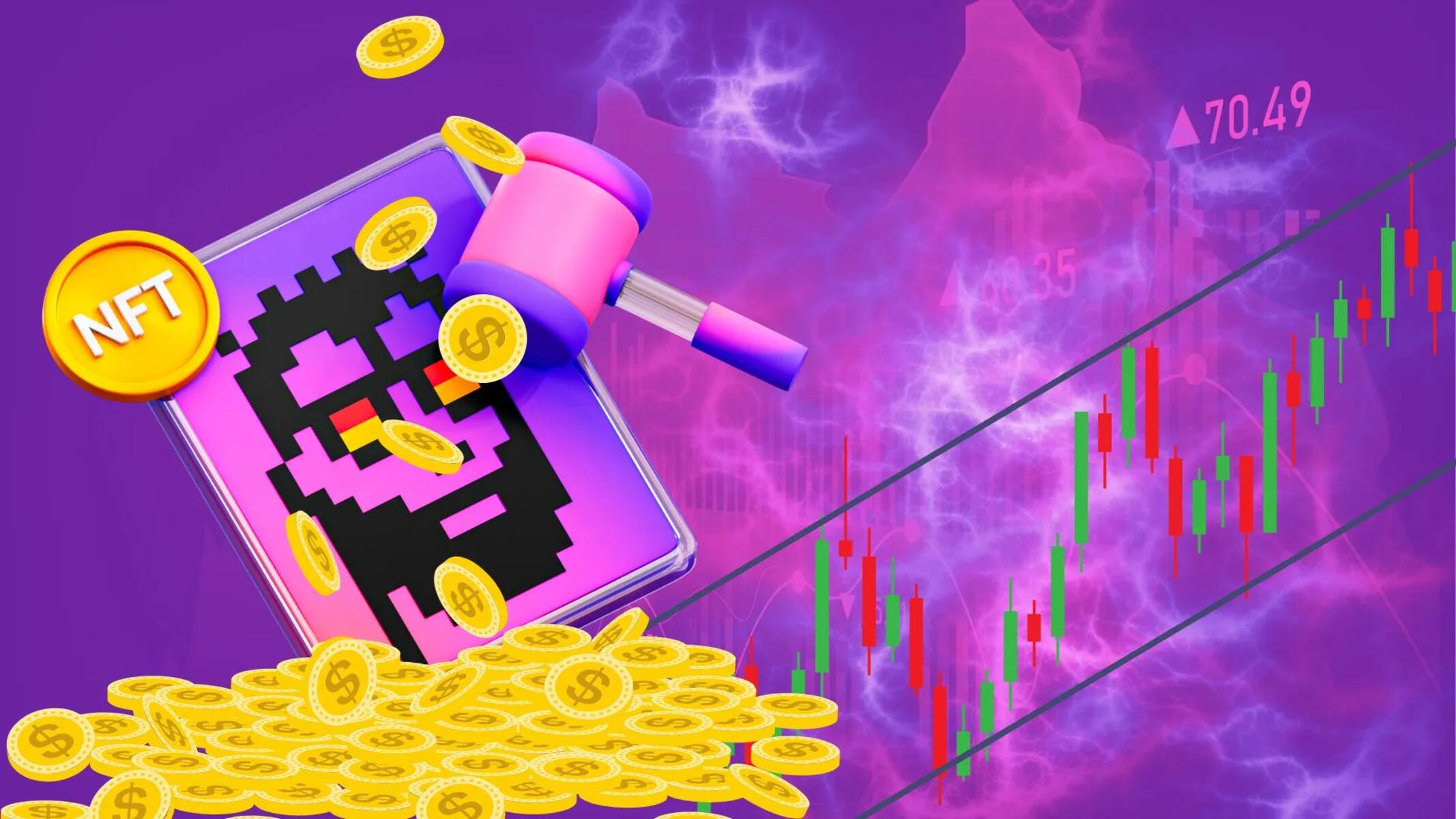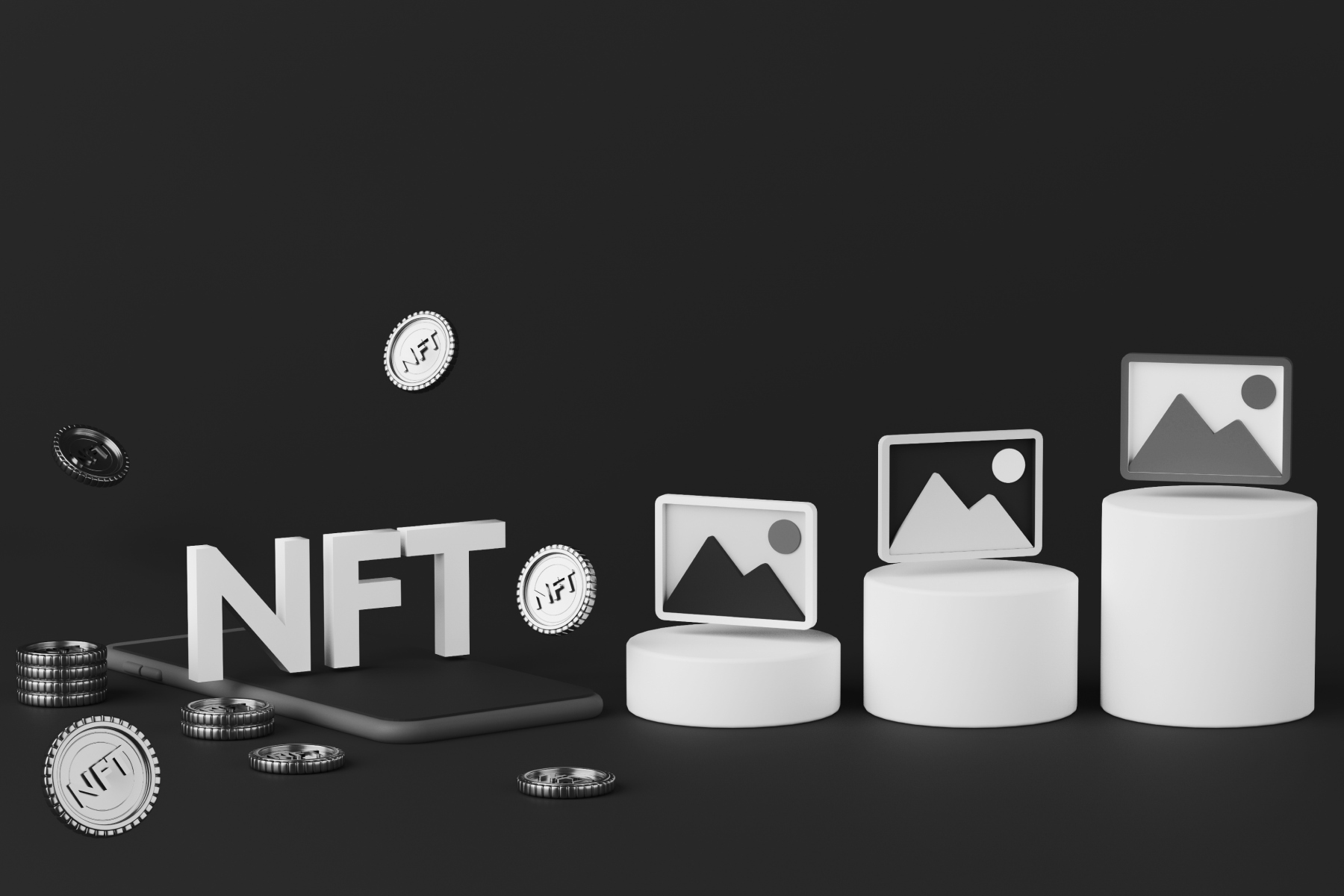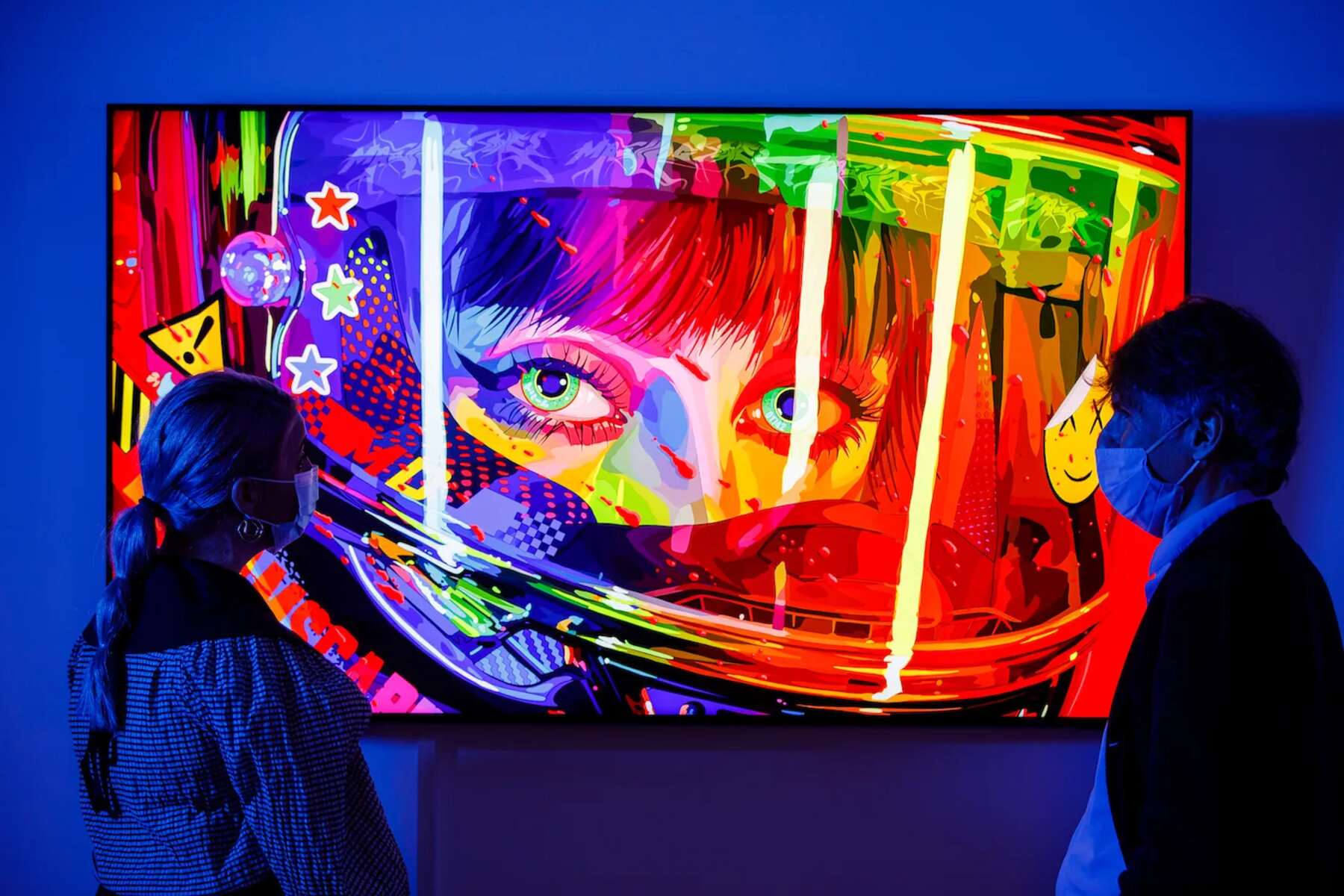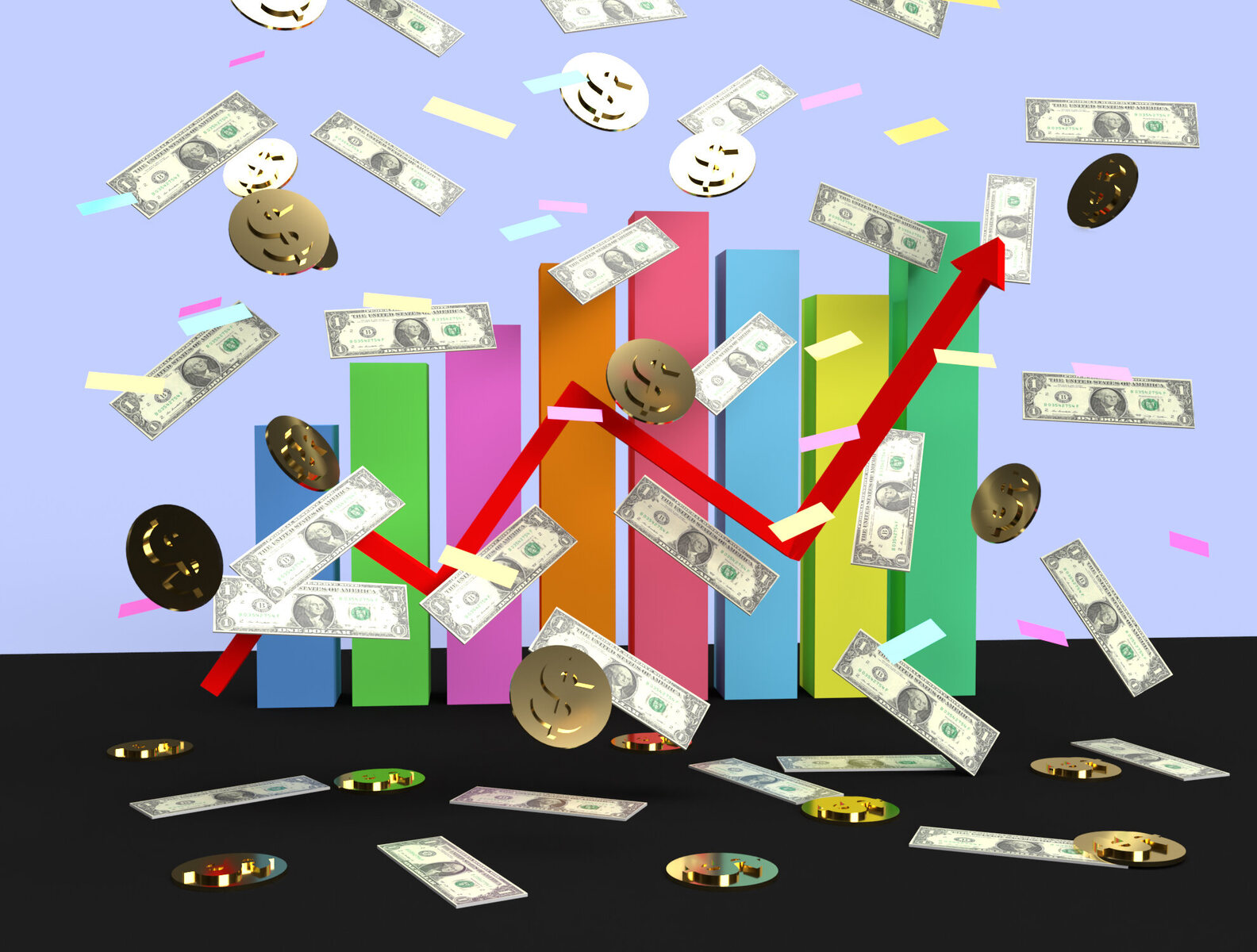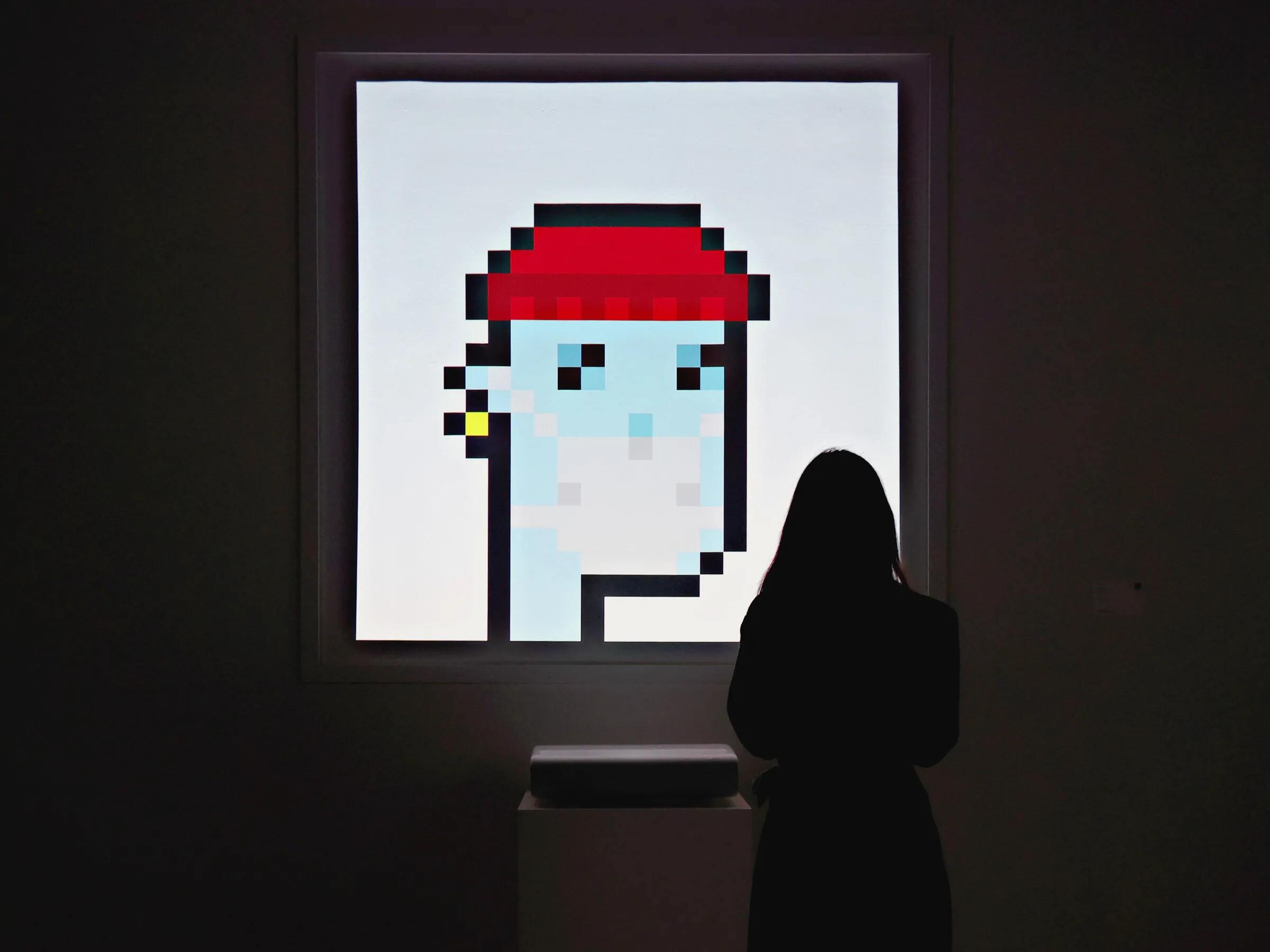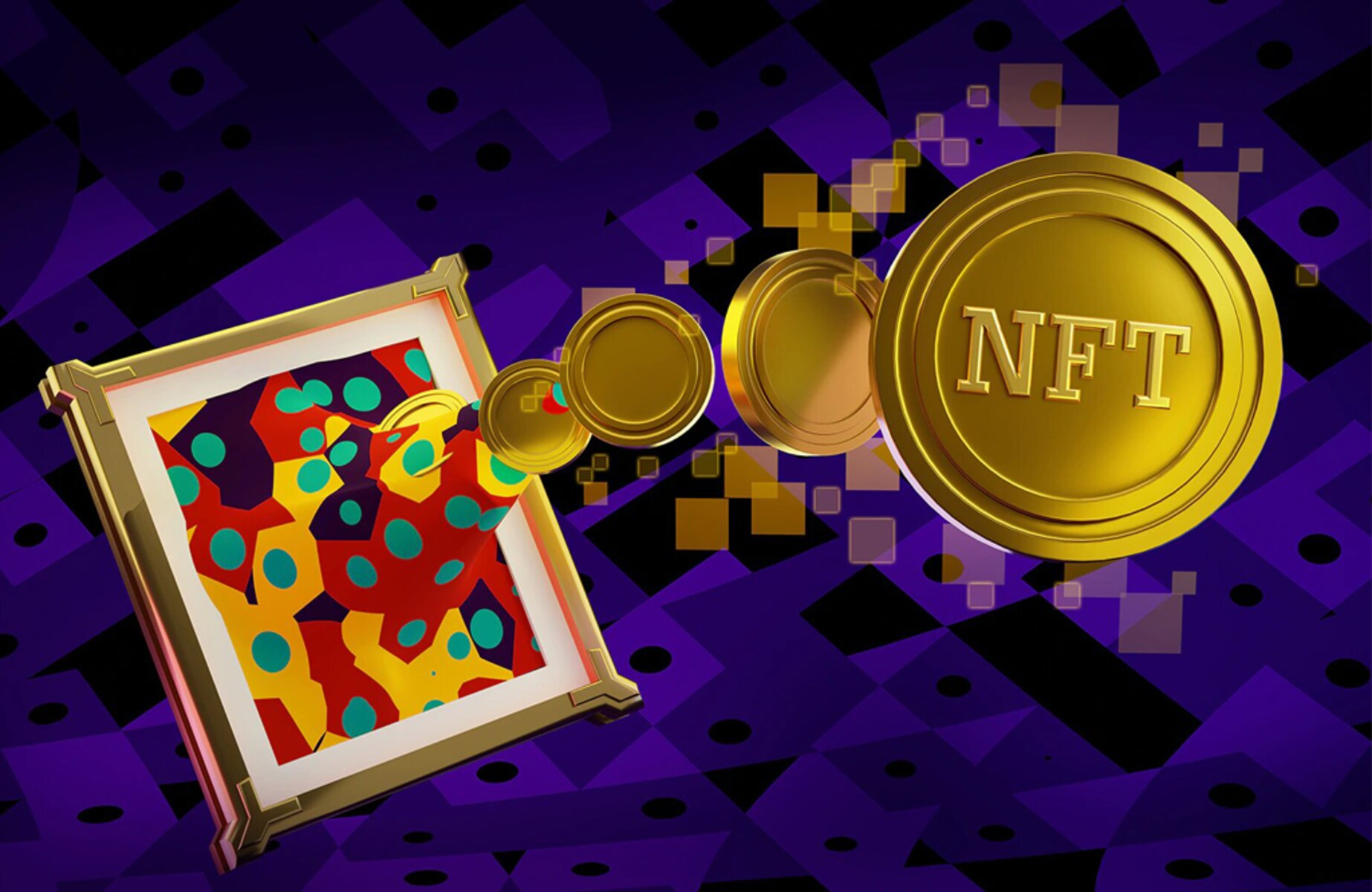Introduction
Welcome to the exciting world of NFT artistry! The digital landscape has brought about a revolution in the way artists create, sell, and showcase their artwork. NFTs, or Non-Fungible Tokens, have opened up new possibilities for artists to monetize their digital creations and gain recognition in the global art community.
An NFT represents a unique piece of digital content, such as artwork, music, videos, or virtual real estate, that is secured by blockchain technology. It provides proof of ownership and authenticity, giving buyers confidence in the value and uniqueness of the digital asset they acquire.
More and more artists are jumping on the NFT bandwagon, and if you’re passionate about your art and eager to explore this exciting new market, then you’ve come to the right place. In this guide, we’ll take you through the essential steps to becoming an NFT artist, from understanding the market to creating, selling, and promoting your artwork.
Before we dive into the details, it’s important to note that the NFT market is dynamic and constantly evolving. While this guide provides a solid foundation, it’s crucial to stay up-to-date with the latest trends and developments in the NFT space. Now, let’s embark on this creative journey together and uncover the secrets to success in the world of NFT art!
What is an NFT?
If you’re new to the world of NFTs, you might be wondering what exactly they are and how they differ from traditional forms of art ownership. Put simply, an NFT, or Non-Fungible Token, is a unique digital asset that is stored on a blockchain, typically the Ethereum blockchain.
Unlike cryptocurrencies such as Bitcoin or Ethereum, which are fungible and can be exchanged for one another, NFTs are indivisible and each represents a distinct piece of content. This content can be anything digital, including artwork, music, videos, virtual real estate, collectibles, and more.
NFTs use blockchain technology to provide proof of ownership, authenticity, and provenance. Every NFT has a unique identifier and metadata, which includes information about the creator, the creation date, and any additional details that contribute to its value or significance.
One of the key features of NFTs is that they are programmable. This means that creators can include smart contracts within their NFTs, enabling them to earn royalties automatically whenever their NFT is resold in the future. This has revolutionized the art world, as it allows artists to continue earning from their work even after it has changed hands multiple times.
Another important aspect of NFTs is their scarcity and uniqueness. While digital files can be easily replicated and shared, the ownership of an NFT is recorded on the blockchain, making it verifiable and distinguishable from copies. This scarcity and uniqueness add value to NFTs and make them desirable for collectors.
The rise of NFTs has opened up new opportunities for artists to monetize their digital creations. By minting their artwork as NFTs, artists can sell them directly to collectors on various NFT marketplaces. This direct-to-consumer model allows artists to retain a larger portion of the revenue compared to traditional art sales, where galleries and intermediaries often take a significant cut.
Now that we have a solid understanding of what NFTs are, let’s explore the vibrant and ever-evolving NFT market to gain a deeper insight into the opportunities it offers for aspiring NFT artists.
Understanding the NFT Market
As an aspiring NFT artist, it is crucial to have a thorough understanding of the NFT market to maximize your success. The NFT market is a dynamic and rapidly evolving space, driven by a combination of technological advancements, collector demand, and cultural trends.
One of the key factors that have contributed to the growth of the NFT market is the increasing acceptance and adoption of blockchain technology. Blockchain provides a transparent and immutable record of ownership, making it an ideal solution for verifying the authenticity and provenance of digital assets, such as NFTs.
Another factor fueling the NFT market is the growing interest from collectors and investors. NFTs allow collectors to own unique pieces of digital content that hold both artistic and monetary value. They serve as a way for collectors to express their appreciation for digital art and support their favorite artists directly.
The NFT marketplaces play a vital role in connecting artists with collectors. These platforms provide a digital marketplace where artists can list and sell their NFTs. Some popular NFT marketplaces include OpenSea, Rarible, SuperRare, and Nifty Gateway. Each marketplace has its own unique features, user base, and fee structure, so it’s important to research and choose the platform that aligns best with your artistic goals and target audience.
When it comes to the types of NFTs that perform well in the market, there is a wide range of possibilities. Digital art, whether it’s illustrations, animations, or 3D models, is a popular category in the NFT space. However, other types of content, such as music, virtual real estate, and collectibles, also have their devoted communities and markets.
One notable trend in the NFT market is the rise of collaborations between artists from different disciplines. These collaborations create unique and highly coveted NFTs that appeal to a broader audience. Partnering with musicians, celebrities, or other artists can help you expand your reach and attract new collectors.
As the NFT market evolves, it’s essential to stay informed about the latest trends, news, and developments. Engage with the NFT community, participate in forums and social media groups, and follow influential artists and collectors. This will not only help you stay updated but also enable you to network, collaborate, and learn from other artists in the NFT space.
Now that we have a deeper understanding of the NFT market, it’s time to focus on developing your artistic style to resonate with the NFT audience. Let’s explore this next step on your journey to becoming a successful NFT artist!
Developing Your Artistic Style for the NFT Audience
Creating art that resonates with the NFT audience requires a thoughtful approach and a deep understanding of their preferences and tastes. While there is a wide range of artistic styles and genres in the NFT market, it’s essential to develop a unique and recognizable style that sets you apart from other artists.
One way to develop your artistic style is to draw inspiration from various sources. Follow other NFT artists and study their work to gain a sense of the different styles and techniques that are popular in the market. Analyze what makes certain artworks stand out, whether it’s the color palette, composition, or subject matter.
Experimentation is a crucial part of the creative process. Don’t be afraid to try new techniques, mediums, or subject matters. Embrace both successes and failures as they will contribute to your artistic growth and help you define your unique style.
Authenticity is highly valued in the NFT market. Find what truly inspires and motivates you as an artist and incorporate it into your work. Developing a personal connection with your art will make it more genuine and relatable to your audience. Remember, the NFT community is looking for artists who are passionate and authentic in their creations.
Aesthetics play a significant role in the NFT market. Pay attention to the visual elements of your artwork, such as color palettes, composition, and overall design. Strive for a visually striking and captivating presentation that will grab the attention of potential collectors scrolling through a marketplace.
Storytelling is another powerful tool in engaging the NFT audience. In addition to creating visually stunning art, consider incorporating narratives or themes that resonate with your audience. Your artwork should have a story behind it that evokes emotions and sparks the imagination of viewers.
While it’s important to develop your own unique style, it’s also essential to adapt to the preferences and trends of the NFT market. Stay in touch with the latest developments and observe the artworks that perform well in terms of sales and engagement. This doesn’t mean copying other artists, but rather understanding what appeals to the NFT audience and incorporating those elements into your own work.
Lastly, seek feedback and constructive criticism from fellow artists and the NFT community. Participate in art communities, engage in discussions, and share your work for review. Constructive feedback can provide valuable insights and help you refine and improve your artistic style.
With a developed artistic style that resonates with the NFT audience, you are ready to move onto the next step – creating and minting your NFTs. Let’s delve into this exciting process in the next section!
Creating and Minting Your NFTs
Now that you have developed your artistic style and are ready to showcase your work as NFTs, it’s time to dive into the process of creating and minting your digital assets.
The first step is to ensure that your artwork is in a digital format that is compatible with NFT marketplaces. Whether you create your art digitally from scratch or have physical artwork that you want to digitize, it’s essential to have high-quality digital files. This typically involves scanning or photographing your physical artwork with a high-resolution camera or using digital tools to create your artwork directly on your computer.
Once you have your digital files ready, it’s time to mint your NFTs. Minting an NFT means creating a unique token on the blockchain that represents your artwork. The most common blockchain used for NFTs is Ethereum, as it provides a robust and secure infrastructure for the creation and trading of NFTs.
To mint your NFTs, you’ll need to choose a platform or marketplace that supports the minting process. Most NFT marketplaces have their own minting tools that guide you through the process step-by-step. They will prompt you to upload your artwork, set a name and description, specify any additional attributes or properties, and determine the number of editions or copies of the NFT you want to create.
When minting your NFT, consider adding value through additional perks or bonuses. This could include offering limited editions, unlockable content, or even physical rewards for collectors. These value-adds can make your NFT more appealing and create additional incentives for buyers.
Once you have completed the minting process, your NFT will be assigned a unique identifier and added to the blockchain. This identifier acts as proof of authenticity and ownership, ensuring that your artwork is secure and cannot be tampered with.
After minting your NFTs, it’s important to keep a record of the details and metadata associated with each NFT. This includes information about the artwork, such as the title, artist name, creation date, and any relevant backstory or inspirations. This information contributes to the provenance and value of your NFT and helps collectors understand and appreciate your work.
Now that you have successfully minted your NFTs, in the next section, we will explore the crucial step of choosing the right marketplace to showcase and sell your artwork.
Choosing the Right Marketplace for Your NFTs
Now that you’ve minted your NFTs, it’s time to choose the right marketplace to showcase and sell your artwork. The marketplace you select will play a significant role in determining the visibility, reach, and potential sales of your NFTs.
There are several factors to consider when selecting a marketplace. First and foremost, you want to choose a platform that aligns with your artistic goals and target audience. Research different NFT marketplaces to understand their user base, reputation, and the types of artworks that perform well on their platform.
Consider the fees associated with each marketplace. Most NFT marketplaces charge a fee for every transaction, such as listing fees, gas fees (transaction fees on the Ethereum blockchain), or a percentage of the final sale price. It’s important to evaluate these fees and understand how they will impact your earnings. Some marketplaces may have lower fees for creators, while others may have more robust features or a larger community of collectors.
The user experience and interface of the marketplace are also essential factors to consider. Look for a marketplace that is easy to navigate and provides a visually appealing and seamless experience for both artists and collectors. A user-friendly platform will make it easier for collectors to discover and engage with your artwork.
Community and networking opportunities are valuable aspects of an NFT marketplace. Look for platforms that foster a strong community of artists and collectors, as this can boost your visibility and provide opportunities for collaboration and engagement. Some marketplaces offer forums, social media integration, and events that allow artists to connect and share their work.
Consider the marketplace’s marketing and promotional efforts. Look for platforms that actively promote and feature artists, as this can increase the visibility of your NFTs. Some marketplaces have dedicated sections for trending or featured NFTs, which can significantly enhance the exposure of your artwork.
Keep in mind the marketplace’s current standing and reputation in the NFT ecosystem. Look for platforms that have a history of successful sales and a high level of trust among artists and collectors. Research reviews and feedback from other creators to ensure you are choosing a reputable marketplace.
Lastly, don’t limit yourself to just one marketplace. Many artists choose to list their NFTs on multiple platforms to increase their chances of reaching a broader audience. However, be mindful of exclusivity agreements and ensure you understand the terms and conditions of each marketplace regarding multiple listings.
By doing your research and considering these factors, you will be able to select the right marketplace that aligns with your artistic goals and maximizes the potential exposure and sales of your NFTs.
Next, we will delve into the crucial step of pricing and selling your NFTs to ensure you receive fair compensation for your digital artwork.
Pricing and Selling Your NFTs
Once you’ve chosen the right marketplace to showcase your NFTs, the next crucial step is to determine the pricing and selling strategy for your digital artwork. Setting the right price for your NFTs ensures that you receive fair compensation for your creativity and helps attract potential collectors.
When it comes to pricing your NFTs, it’s important to consider several factors. First, assess the uniqueness and rarity of your artwork. Limited edition or one-of-a-kind NFTs tend to command higher prices due to their scarcity value. Consider whether you want to offer different tiers or editions of your NFT, each with its own pricing structure.
Market demand and trends also play a role in pricing your NFTs. Research similar artworks and their sale prices on the marketplace to gauge the market value. Take into account the current demand for your artistic style, genre, or thematic elements in the NFT market, and adjust your pricing accordingly.
Your reputation and track record as an artist can also influence the pricing of your NFTs. If you have an established following or have had successful sales in the past, you may be able to set higher prices for your artwork. On the other hand, if you are a new artist entering the NFT space, consider starting with more modest prices to attract initial collectors and build your reputation.
Consider the cost of production and any expenses associated with creating your artwork when determining the pricing. This includes factors such as time, materials, and any licensing fees for third-party assets used in your work. It’s important to ensure that your pricing covers these costs while still providing a fair return on your investment.
Flexibility in pricing can be beneficial for selling your NFTs. Consider offering a range of prices to cater to different budgets and collecting preferences. This can help attract a wider audience and increase the chances of a sale.
When it comes to the actual sale of your NFTs, be strategic in your approach. Building anticipation and promoting your upcoming NFT drops can create buzz and generate interest among collectors. Leverage your social media presence, website, or mailing list to announce and generate excitement around your NFT releases.
Timing is also important. Keep an eye on market trends and events that may impact the demand for NFTs. Participating in NFT drops or collaborations during significant dates or events can help increase exposure and generate more sales.
Engaging with potential buyers is crucial to selling your NFTs. Respond promptly to inquiries, provide additional information, and be transparent about the value and uniqueness of your artwork. Engage with your collector community, interact with them on social media, or consider offering perks or incentives for collectors who purchase your NFTs.
Don’t be afraid to adjust your pricing strategy based on market feedback. If initial pricing doesn’t yield the desired results, you can experiment with different price points, promotions, or value-adds to entice collectors and drive sales.
By carefully considering these factors and implementing a strategic pricing and selling approach, you can increase the likelihood of selling your NFTs and establishing yourself as a successful NFT artist.
Next, we will explore the crucial aspect of marketing and promoting your NFT artwork to expand your reach and attract a wider audience.
Marketing and Promoting Your NFT Artwork
Marketing and promotion are vital aspects of becoming a successful NFT artist. With countless artworks available in the NFT marketplaces, effectively promoting your NFT artwork is crucial to attract collectors and increase your chances of sales.
One of the first steps in marketing your NFT artwork is to establish a strong online presence. Create a professional website or portfolio where you can showcase your artwork and provide information about yourself as an artist. Include high-quality visuals of your NFTs, artist statements, and any relevant background information that can help potential collectors connect with your work.
Utilize social media platforms to amplify your reach and engage with your target audience. Platforms like Twitter, Instagram, and TikTok connect you with a wider community of artists, collectors, and NFT enthusiasts. Share behind-the-scenes glimpses of your creative process, progress updates of upcoming artworks, and engage in conversations with your followers to build meaningful connections.
Collaborate with other artists or non-artistic influencers to cross-promote your NFT artwork. Partnering with influencers or creators who have a similar target audience can expose your artwork to new collectors and expand your reach. Consider creating joint releases or collaborations that bring together different artistic styles or genres.
Participate in NFT-related events and virtual art exhibitions. Engage with the NFT community by attending conferences, webinars, or panel discussions to share your insights and connect with industry professionals. These events provide networking opportunities and allow you to learn from other artists while gaining visibility for your own artwork.
Consider creating content that provides value to your audience. Write blog posts, make YouTube videos, or host live streams where you share your knowledge and experiences as an NFT artist. By providing educational and engaging content, you can establish yourself as an authority in the NFT space and attract a loyal following.
Engage with the NFT community by participating in forums, Discord channels, and online communities dedicated to NFTs. Contribute to discussions, provide feedback on other artists’ work, and join conversations about emerging trends in the NFT market. Engaging with the community helps you establish connections, gain insights, and raise awareness of your own artwork.
Utilize email marketing to maintain a direct line of communication with your audience. Encourage visitors of your website and social media platforms to subscribe to your mailing list. Send regular updates about new NFT releases, collaborations, or upcoming events to keep your subscribers informed and engaged.
Don’t underestimate the power of word-of-mouth marketing. Encourage your collectors and followers to share your artwork with their networks. Consider offering referral bonuses or discounts for collectors who refer new buyers to your NFTs. Generating buzz and excitement around your artwork can lead to increased visibility and potential sales.
Lastly, be consistent and persistent in your marketing efforts. Building a successful brand and artist presence in the NFT space takes time and effort. Continually promote your artwork, engage with your audience, and refine your marketing strategies based on feedback and analytics.
By leveraging these marketing and promotional techniques, you can amplify the visibility of your NFT artwork and connect with collectors who appreciate and support your creative journey.
Next, we will explore the importance of engaging with the NFT community to foster meaningful connections and establish your presence in the NFT ecosystem.
Engaging with the NFT Community
Engaging with the NFT community is a crucial aspect of establishing yourself as an NFT artist. The NFT community comprises artists, collectors, enthusiasts, and industry professionals who share a passion for digital art and the blockchain technology that supports it. By actively participating in the community, you can foster meaningful connections, gain insights, and contribute to the growth of the NFT ecosystem.
One way to engage with the NFT community is by participating in online forums and discussion boards dedicated to NFTs. Platforms like Discord, Telegram, and Reddit have vibrant communities where artists and collectors gather to share their work, discuss trends, and exchange ideas. Actively contribute to these conversations, provide feedback on other artists’ work, and seek advice or inspiration from the community.
Joining NFT-related communities on social media platforms is another excellent way to engage with the community. Follow artists, collectors, and influential accounts in the NFT space on platforms like Twitter, Instagram, and Clubhouse. Interact with their posts, share your thoughts, and join conversations to build connections and expand your network.
Participating in virtual events and conferences dedicated to NFTs is a fantastic opportunity to engage with the community and learn from industry professionals. Attend panel discussions, webinars, or workshops where you can gain insights into the latest trends, best practices, and emerging opportunities in the NFT market. These events also provide networking opportunities and allow you to connect with like-minded individuals.
Consider collaborating with other artists within the NFT community. Collaborations not only allow you to tap into the creativity of others but also expose your artwork to new audiences. Collaborative projects can generate excitement, create unique and valuable NFTs, and strengthen your presence within the community.
Offering support and mentorship to budding NFT artists can be a rewarding way to engage with the community. Share your knowledge, experiences, and tips with newcomers, and guide them on their NFT journey. This generosity will be appreciated by the community and help establish your reputation as a supportive and experienced artist.
Engage with your audience by hosting live streams, Q&A sessions, or interactive workshops. Involve your followers in your creative process, seek feedback, and make them feel like a part of your artistic journey. This level of engagement builds a loyal following and fosters a sense of community around your artwork.
Giveaways and contests are effective ways to engage with the NFT community and generate excitement. Consider hosting NFT giveaways or art raffles for your followers and collectors. This not only rewards their support but also attracts new fans and collectors to your artwork.
Maintain an open line of communication with your audience. Respond promptly to comments, messages, and inquiries, and show appreciation for the support you receive. Genuine interaction builds trust and strengthens your relationship with the community.
Remember to stay respectful and considerate in your interactions within the NFT community. Treat others with kindness and professionalism, and be open to differing opinions and perspectives. Engaging in healthy discussions and fostering a positive environment will contribute to a thriving and supportive NFT community.
By actively engaging with the NFT community, you can forge valuable connections, gain insights, and establish your presence as an NFT artist. This engagement not only benefits your own artistic journey but also contributes to the growth and development of the broader NFT ecosystem.
Next, we will explore the important aspect of ensuring the authenticity and provenance of your NFT artwork.
Ensuring the Authenticity and Provenance of Your NFTs
As an NFT artist, it is crucial to establish and maintain the authenticity and provenance of your NFT artwork. The unique properties of blockchain technology prove invaluable in ensuring the credibility, ownership, and origin of your digital creations.
One of the key benefits of NFTs is their ability to provide undeniable proof of ownership. When minting your NFTs, make sure to include accurate and detailed information about the artwork, such as the title, description, and date of creation. This information adds to the provenance of your NFT and helps collectors understand and appreciate its value.
Metadata plays a vital role in establishing the authenticity of your NFTs. Include relevant details in the metadata, such as your artist name, signature, and contact information. These details contribute to the overall authenticity of your NFT and can serve as a reliable point of reference for collectors and art historians.
Consider using digital signatures or watermarks to further authenticate your NFT artwork. These unique identifiers embedded in the digital file add an extra layer of security and verification, ensuring that the artwork is genuine and not a copy or reproduction.
Transparency is key in the NFT market. Be open and transparent about your artistic process, inspirations, and any collaborations involved in the creation of your artwork. This transparency not only builds trust with your collectors but also strengthens the overall provenance of your NFTs.
Choose reputable marketplaces and platforms to mint and sell your NFTs. Research their reputation, security measures, and the steps they take to verify the authenticity and provenance of the artworks listed on their platform. Selecting trustworthy platforms contributes to the overall trust surrounding your NFT as buyers can rely on the integrity of the marketplace.
Consider providing a certificate of authenticity or a digital art ledger with your NFTs. These additional documents or verifiable records help substantiate the authenticity and provenance of your artwork. They provide collectors with additional confidence and documentation regarding the origin and ownership of the NFT.
When selling your NFTs, maintain a transparent and traceable record of all transactions. Blockchain technology inherently records every transfer and sale of an NFT, ensuring a transparent and unalterable history. This record serves as proof of the chronological sequence, ownership, and sales history of your NFTs.
Stay informed about the ever-evolving technological advancements in blockchain and NFT technology. As the industry evolves, new tools, standards, and methods for verifying authenticity and provenance may emerge. Stay up-to-date with these developments and implement best practices to ensure the ongoing integrity of your NFT artwork.
By prioritizing the authenticity and provenance of your NFTs, you not only protect your own reputation as an artist but also contribute to the overall trust and credibility within the NFT ecosystem. Ensuring transparency and establishing a strong foundation of authenticity are crucial elements in building a successful career in the world of NFT art.
Next, let’s conclude our journey by summarizing the essential steps you’ve learned to become a successful NFT artist.
Conclusion
Congratulations! You’ve embarked on the journey to become a successful NFT artist. Throughout this guide, we’ve explored the essential steps and considerations for navigating the world of NFTs and establishing yourself as a creative force in this burgeoning industry.
We began by understanding what NFTs are, how they differ from traditional forms of art ownership, and their immense potential for artists in the digital age. From there, we delved into the importance of developing your unique artistic style, one that resonates with the NFT audience and sets you apart from other artists.
We then explored the process of creating and minting your NFTs, ensuring that your digital assets are compatible with NFT marketplaces and securely stored on the blockchain. We discussed the significance of choosing the right marketplace, considering factors such as fees, user experience, and marketing and promotional efforts.
Pricing and selling your NFTs form a critical aspect of your success. We examined the factors to consider when determining the value of your artwork and strategies for engaging potential collectors and driving sales.
To maximize your reach and visibility, we emphasized the importance of marketing and promoting your NFT artwork. We explored various tactics, including establishing an online presence, leveraging social media platforms, participating in NFT communities, and connecting with influencers.
Engaging with the NFT community is key to building meaningful connections and establishing your presence in the ecosystem. Whether it’s through collaborations, support for fellow artists, or participation in events and discussions, your active engagement enhances your credibility and expands your network.
Finally, we highlighted the significance of ensuring the authenticity and provenance of your NFTs. By taking steps such as incorporating accurate metadata, providing certificates of authenticity, and choosing reputable platforms, you safeguard the integrity of your artwork and build trust with collectors.
As you embrace the world of NFT artistry, always remain adaptable and open to new opportunities and developments within the market. Continually refine your artistic style, engage with the community, and stay informed about the latest trends and technological advancements.
Remember, success in the NFT ecosystem is a journey, and it requires dedication, perseverance, and a passion for your craft. Embrace the challenges, celebrate your achievements, and continue to push the boundaries of what is possible in the dynamic realm of NFT art.
Now, armed with the knowledge and insights gained from this guide, it’s time to unleash your creativity, capture the hearts of collectors, and shine as a successful NFT artist. Best of luck on your NFT journey!







